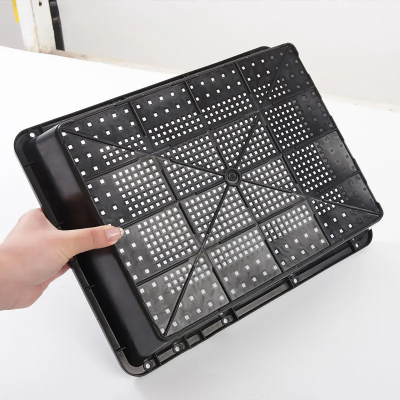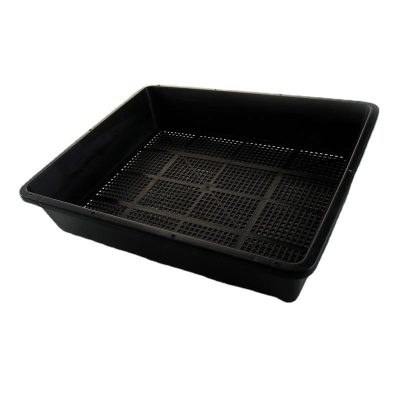Plant trays and direct planting both have their pros and cons, and the choice depends on various factors such as the type of plants, growing conditions, and personal preferences. Let’s explore the pros and cons of each:
Plant Trays:
Pros:
- Controlled Environment: Plant trays provide a controlled environment for seed starting and early plant growth. They allow you to control factors like moisture, temperature, and light, which can improve germination rates and early growth.
- Efficient Use of Space: Plant trays allow you to grow a large number of plants in a compact space. This is especially beneficial if you have limited garden space or if you want to start many seeds at once.
- Easy Seedling Management: Plant trays with individual cells or compartments make it easier to manage and separate seedlings. They prevent root entanglement and make transplanting more convenient.
- Better Root Development: Plant trays encourage plants to develop a strong and healthy root system. The restricted space promotes root growth within the cell or compartment, resulting in more robust plants.
Cons:
- Transplant Shock: Transferring seedlings from plant trays to their final planting location can cause transplant shock. Seedlings may need some time to adjust to new soil conditions, light exposure, and temperature, which can temporarily slow down growth.
- Limited Soil Volume: Plant trays typically have limited soil volume compared to directly planted plants. This means plants may require more frequent watering and fertilization to ensure they receive adequate nutrients.
Direct Planting:
Pros:
- Reduced Transplant Shock: Direct planting eliminates the need for transplanting, minimizing transplant shock and allowing plants to establish quickly in their final growing location.
- Natural Growth: When plants are directly sown in the ground or larger containers, their roots can spread freely and establish a more natural growth pattern.
- Lower Maintenance: Directly planted plants generally require less maintenance than seedlings started in trays. Once established, they can adapt to local conditions, requiring less watering and care.
- More Soil Volume: Direct planting allows plants to have a larger soil volume, providing more space for root growth and nutrient uptake.
Cons:
- Space Limitations: Direct planting may not be feasible if you have limited space or if you want to grow a large number of plants. It requires sufficient garden beds or containers to accommodate the desired plant quantities.
- Slower Germination: Directly planted seeds may take longer to germinate compared to seeds started in plant trays. The soil conditions and external factors may also affect germination rates.
- Weed Competition: Without the initial protection of plant trays, directly planted seeds can face more competition from weeds. Extra care and weed control measures may be necessary.
- Seasonal Limitations: Direct planting is often limited to specific seasons or growing conditions. In colder climates, where the growing season is shorter, starting seeds indoors in plant trays can extend the growing period.
Consider these pros and cons when deciding between plant trays and direct planting. You can also use a combination of both methods depending on your gardening goals and the specific needs of different plant varieties.








